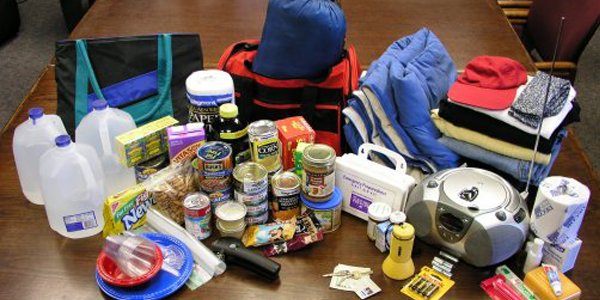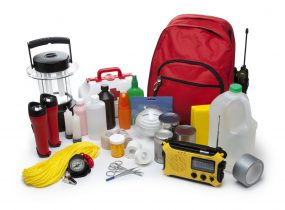Emergency Preparedness: Building a Safer, Stronger Area Together
Emergency Preparedness: Building a Safer, Stronger Area Together
Blog Article
Just How to Develop a Detailed Emergency Situation Readiness Plan
In the realm of preparedness, developing a thorough emergency strategy is not just a task to examine off a listing; it is a necessary foundation of any type of company or person's resilience method. From natural disasters to unforeseen dilemmas, the ability to anticipate, minimize, and respond properly can indicate the distinction between mayhem and control. By carefully crafting a plan that deals with numerous facets of emergency management, consisting of threat assessment, communication protocols, resource allotment, and tactical decision-making, one can lay a solid foundation for guarding procedures, lives, and properties. However, real efficiency of such a plan lies not just in its creation however likewise in its recurring maintenance and adjustment to advancing obstacles and risks.
Value of Emergency Readiness
Emergency situation preparedness is important for alleviating possible threats and making sure the safety and security of individuals and areas. In today's globe, where natural catastrophes, public health dilemmas, and other emergency situations can strike without warning, being prepared can make a significant distinction in reducing the influence of these events. By having a well-thought-out emergency situation readiness strategy in position, companies and individuals can react properly, shield lives, and minimize property damages.
One of the main reasons emergency situation readiness is vital is its role in conserving lives. Having a strategy that lays out clear procedures for evacuation, emergency, and interaction reaction can help people act quickly and decisively when emergencies happen (Source). This can avoid injuries and deaths by ensuring that individuals know what actions to take to remain secure
Furthermore, emergency preparedness boosts the resilience of areas. By promoting a society of preparedness and planning for different scenarios, areas can recuperate extra promptly from disasters and disturbances. This strength is essential for maintaining security, connection of operations, and general health when faced with misfortune.
Assessing Prospective Risks
Taking into consideration the significance of being gotten ready for unpredicted events, the preliminary action in establishing an efficient emergency preparedness strategy includes extensively examining and analyzing possible threats. This assessment calls for an extensive evaluation of all possible hazards that could influence the organization, taking right into account factors such as area, market, and historic data on events. By recognizing these threats, companies can prioritize their preparedness initiatives and assign resources successfully to alleviate the most significant threats.
Common threats that companies might face consist of all-natural calamities like earthquakes, typhoons, or floods, technical dangers such as power interruptions or data breaches, in addition to human-caused risks like mishaps or deliberate acts of violence. Conducting a risk evaluation additionally involves considering the possible influence of these events on the company's operations, employees, customers, and track record. By performing a complete threat evaluation, companies can establish customized emergency situation response plans that resolve their certain susceptabilities and ensure efficient readiness for any possible crisis.
Creating an Interaction Plan
Establishing a thorough and clear interaction strategy is crucial for effective emergency situation readiness within companies. In times of dilemma, communication plays an important duty in ensuring the safety and security and health of workers, stakeholders, and the community. A well-balanced communication strategy ought to lay out clear lines of communication, mark crucial workers in charge of communication tasks, and establish protocols for distributing details quickly and accurately.
One trick aspect of developing a communication strategy is recognizing main and alternating communication channels (EMERGENCY PREPAREDNESS). These can consist of email, text messaging, phone trees, social media sites platforms, and public address systems. It is crucial to make sure that these channels are reputable, obtainable, and on a regular basis tested to ensure their performance during emergencies

Building an Emergency Situation Kit
Provided the essential importance of readiness in times of dilemma, a vital element that companies must resolve is the facility of an emergency package. An emergency their explanation set acts as a vital source that can aid mitigate the influence of unexpected occasions, guaranteeing that necessary products and tools are conveniently offered when required most. When putting together an emergency situation set, it is important to consider the certain demands and situations of the company. Basic things such as water, non-perishable food, initial help products, flashlights, batteries, and a battery-powered radio are fundamental parts of any type of emergency kit. In addition, organizations ought to include vital documents, such as call checklists, insurance coverage info, and emergency feedback strategies, in waterproof containers within the kit. Regularly examining and updating the contents of the emergency package is necessary to guarantee that products are existing and practical. By proactively preserving an emergency situation and constructing package, organizations can boost their preparedness to efficiently react to dilemmas and secure their workers and properties.
Developing Emptying Procedures
To ensure the security and organized emptying of employees throughout emergency situations, organizations should develop clear and efficient discharge procedures. Discharge procedures need to include a variety of prospective scenarios, including fires, natural disasters, or other emergencies that need swift evacuation.

Additionally, companies need to develop a system for accountancy for all workers during an evacuation to ensure that every person has actually safely left the properties. Communication plays an essential function in discharge treatments, with clear guidelines on exactly how to evacuate and when to do so. Routine testimonial and updating of discharge treatments based on comments and altering circumstances are vital to maintaining the effectiveness of the plan.
Final Thought
Finally, creating a detailed emergency situation preparedness plan is important for making certain the safety and well-being of people in case of a catastrophe (EMERGENCY PREPAREDNESS). By evaluating prospective threats, creating an interaction plan, developing an emergency situation package, and developing emptying organizations, people and procedures can be much better geared up to respond efficiently to emergency situations. It is necessary to focus on readiness initiatives to minimize the influence of catastrophes and protect lives and building
In the world of readiness, establishing a detailed emergency plan is not merely a job to check off a listing; it is a vital foundation of any organization or person's durability technique. When emergency situations happen, having a plan that outlines clear procedures for emergency, communication, and discharge feedback can help individuals act quickly and emphatically. navigate to this website. By performing a thorough danger assessment, companies can create customized emergency situation reaction strategies that address their specific vulnerabilities and ensure efficient readiness for any possible situation
Developing a detailed and clear communication strategy is important for effective emergency preparedness within companies. By assessing potential dangers, producing an interaction plan, developing an emergency situation package, and establishing evacuation treatments, companies and people can be better outfitted to react efficiently to emergency situations.
Report this page